Ready to take your Yoga business to the next level? To make sure your Yoga studio is competitive and successful; you need to know the fundamentals of pricing. It might seem tricky to decide on an appropriate cost for your classes, but don’t worry, we’ve got you covered. Read on to find out the details on “how much for Yoga classes?” and select the perfect price for your Yoga class and reach your goals!
How to set the price for your Yoga class?
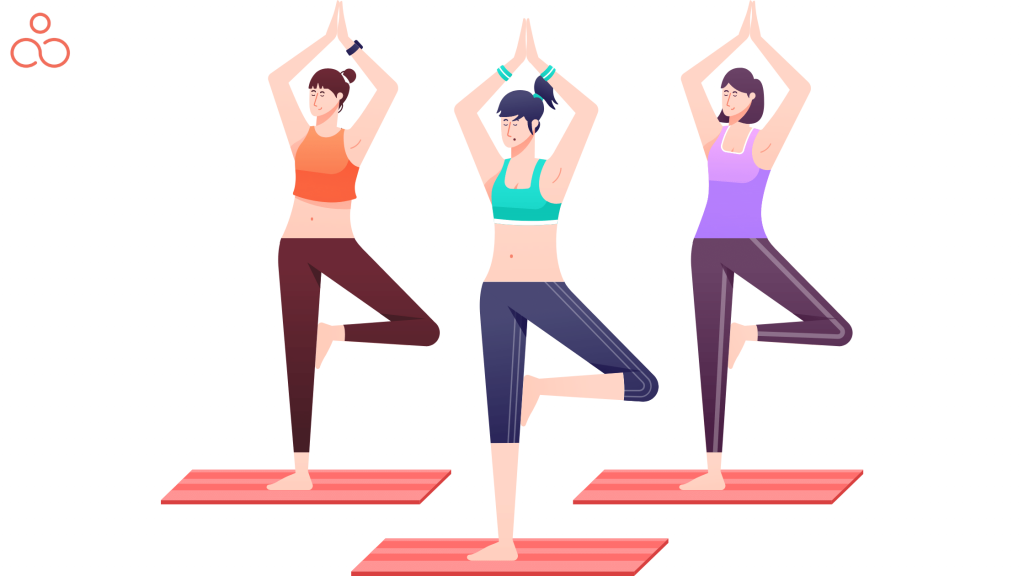
It’s a tricky question: how much should you charge for a Yoga class? The answer is complex.
- It depends on class type, services, experience, location, and target audience.
- You must also consider the place where you’ll teach, from the size to rent or mortgage, and facilities.
- All of these factors contribute to setting the right price.
- Knowing your fixed monthly and annual costs, and the number of students, are vital for determining a reasonable price and choosing the best pricing model for you.
- When setting your rates, remember that most classes in the area probably have similar prices, with some exceptions.
- So, when considering your pricing strategy, consider all the factors that are unique to you!
Factors to keep in mind while setting a price for a Yoga class
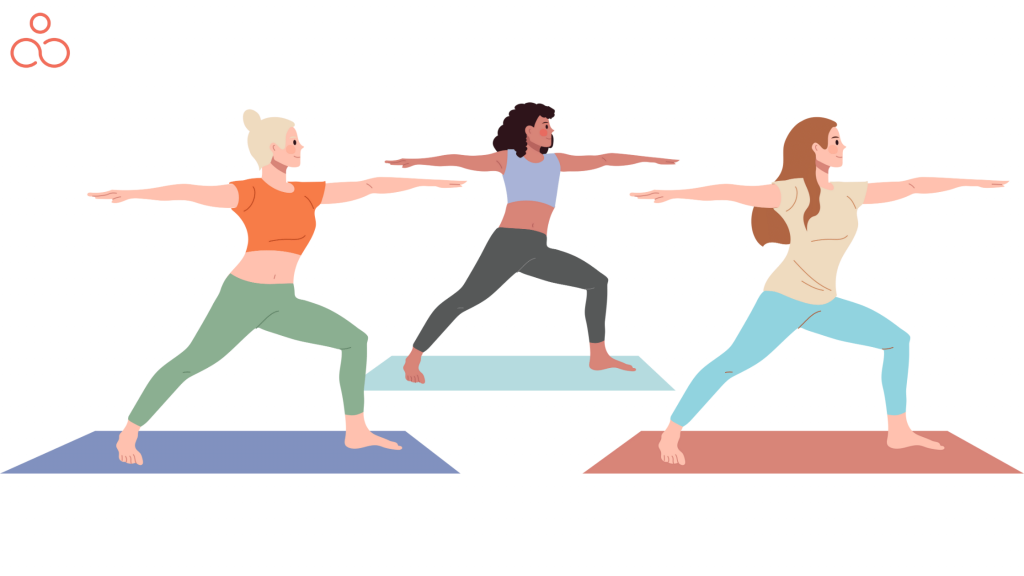
If you’re setting prices for your sessions, there are a few key elements to take into consideration. From your experience and qualifications to the length of the session and your overhead costs, all these factors play an important role. Make sure you consider them all when deciding on your rates.
- If you’re wondering what to charge for your Yoga class, consider the location. Knowing the location quotient (LQ) of your studio’s area or your target audience’s background can help you figure out the competition in that area. The more Yoga studios in the area, the higher the LQ. Knowing this can help you come up with a price point.
- Services like prenatal Yoga, Yoga with pets, or online classes will fetch you a premium price – and we don’t blame you! After all, you worked hard to acquire those skills, so you should be rewarded. Plus, you can cover the equipment cost like Yoga mats, bolsters, and blocks by adding them to your class prices, so your students don’t have to spend extra.
- When life gets overwhelming, it can be hard to cope. That’s why stress-relieving activities, like Yoga, are in higher demand than ever before. This trend is due to the law of supply and demand—an economic theory that explains the relationship between the prices of services and the demand and supply. Knowing this theory can help you understand how prices are determined and adjust your budget accordingly.
- Given the fame of Yoga, there’s no surprise that you’ll find many competitors. The higher the local quality (LQ) in your area, the more cutthroat the competition. But this competition can be an opportunity to establish your own pricing strategy or measure how effective your current pricing plan is.
- If you are running a studio space, the rate will depend on the infrastructure setup. If it is a single-room space, the amount you need to add to your pricing will be lower than if you had a lobby and many rooms for your staff members. You also have to factor in the amount you are paying for the space through a mortgage or rent.
How much for Yoga classes?
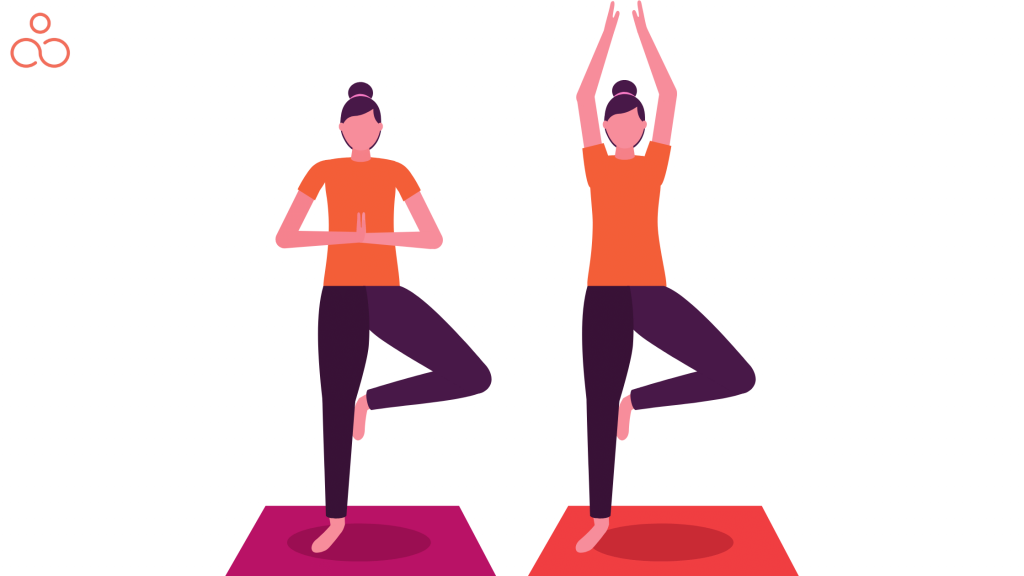
Pricing your Yoga classes can be tricky, but you need to know that the average cost of Yoga classes ranges from $9-$30 for drop-ins. It would help if you struck a balance to ensure you don’t overcharge or undercharge. Setting the cost too high could make the offer unaffordable, too low, and you need to get a fair deal. But with the right strategy, you’ll be able to get the rate you want while keeping your clients happy.
How much to charge for corporate Yoga classes?
You’ve got two choices for charging for your Yoga classes. You could use a flat fee for the session, or you can go with a per-person rate. The flat rate is more manageable since you don’t have to mess with numbers. It should also cover your costs and effort in teaching the class. With a per-person rate, $5 is the typical cost. That can add up quickly, though, especially if you’re teaching big groups or it’s a company footing the bill. You want people coming back, so try to price accordingly.
How much to charge for online Yoga classes?
How about offering Yoga classes online? On average, you’ll charge around $20 per class. But that rate can vary depending on your experience and expertise in Yoga. Sure, we get it, you’re new to teaching, and you might be tempted to offer rock-bottom rates just to get started. But remember the value your practice brings to your students! Even if you’re starting out, you can still provide them with the benefits of Yoga. So, when setting your rates, remember that you’re offering something invaluable!
How much to charge for private Yoga classes?
Private Yoga classes offer one-on-one instruction to individuals who are looking for tailored guidance. Prices may vary across locations but generally range between $30-70 for one session. If you’re a Yoga teacher traveling to people’s homes, remember to factor in your travel time and expenses like gas, parking, and vehicle use. So check out what private Yoga lessons cost in your area and accordingly set your price to enjoy their benefits!
How much to charge for semi-private Yoga classes?
If your students want to get their downward dogs on, then semi-private Yoga classes are the best bet. In these classes you can have no more than 3 people, so they can get individualized guidance while still having the comfort of their own group and save 40% compared to private sessions. Typically, these classes range from $9 to $18 per person.
How much for Yoga classes for kids?
If you’re a newbie to the kid’s Yoga teaching field, then starting by charging a bit less than your more experienced peers is okay. Generally, kid Yoga teachers usually begin their careers with rates between $40 and $75 an hour. But don’t let that limit you – with practice; you can learn to charge your worth!
How much to pay for Yoga donation classes?
Interested in attending a donation-based Yoga class? The amount donated per class can range from $8 to $20, but you can give any amount you’re comfortable with. Most people stick to the same donation each time. However, you can constantly adjust the amount if you change your financial situation. Whether to offer donations, a sliding scale, or free Yoga classes are up to the teacher, and each has its pros and cons. It doesn’t necessarily correlate to the quality of the course, though. It all comes down to the instructor – a great teacher will always be a great teacher, regardless of the type of class they’re teaching.
How much can a Yoga teacher earn?
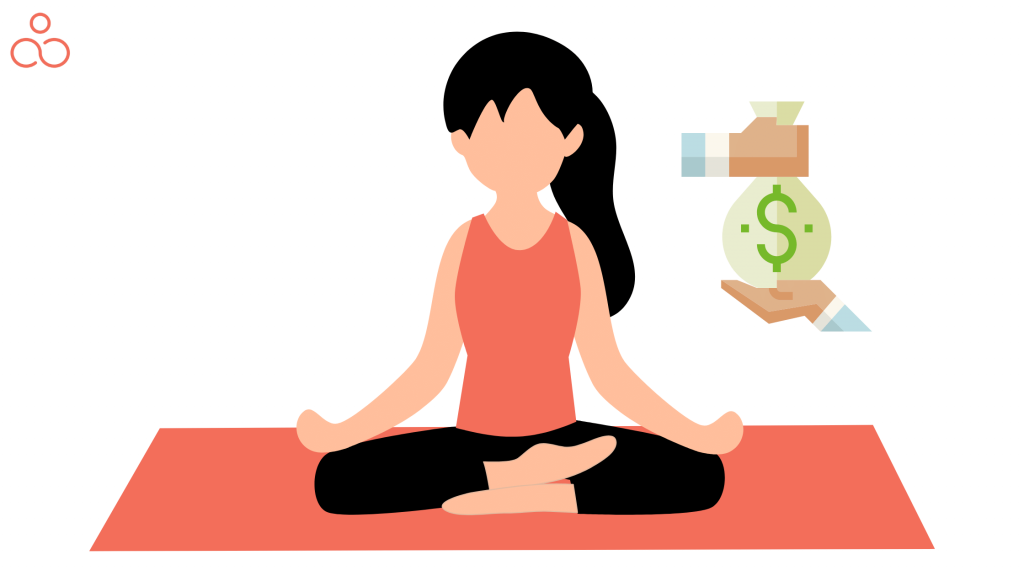
Becoming a Yoga teacher requires years of dedication and honing your skills. But if you persist, you can earn a good income for teaching different postures of Yoga—it all depends on the type of Yoga you teach and your expertise. Let’s take a closer look.
Yoga for beginner level
If you’re just getting started with Yoga, begin with the basics. Some beginner poses include Tadasana, Vrikshasana, Adho Mukha Svanasana, and Trikonasana. A session for a newbie should be at most thirty minutes. However, the session duration depends on how comfortable your students feel with the poses. So, please encourage them to practice basic postures in the beginning. This should take less time, and the cost should be around $3 to $6 per class. Additionally, if you are teaching a group, you should charge them weekly or monthly.
Yoga for intermediate level
If you want to take your Yoga skills to the next level, the medium level is perfect for you! This class will familiarize you with poses like Padangusthasana, Paripurna Navasana, Dhanurasana, Ustrasana, Bakasana and Garudasana. Plus, you’ll gain the knowledge and confidence to take on more complex poses. Each class lasts one to two hours, but you can take longer if necessary. For this more intensive learning experience, the fee is around $9 to $18 per head.
Yoga for Advanced level
Advanced Yoga classes should allow students to practice more complex poses, such as Tittibhasana, Kapotasana, Natarajasana, Padmasana, Mayurasana, Eka Pada Koundinyasana I, Eka Pada Koundiyasana II, Bhijapidasana, Anantasana and Dwi Pada Viparita Dandasana. These classes are longer than regular ones, usually lasting between one and three hours, with a more extended warm-up period. Instructors can earn up to $12 to $24 per session or offer a monthly fee. For maximum success, it’s essential to carefully plan classes and focus on advertisements early on. With that in mind, you should now have a clearer idea of your potential earnings as a Yoga instructor.
Tips to attract students
Becoming a top-notch Yoga instructor isn’t just about knowing the poses. You gotta bring passion and embody the spirit of Yoga. A few essential qualities can help you draw students in and inspire them with your unique teaching style. Here’s how to make that happen!
- To make your Yoga center well-known, you should look into different ways to advertise your classes. You can use posters, leaflets, and online platforms.
- Additionally, you can give students the advantage of learning Yoga online. To get started, provide your class details to register.
- Getting your business up and running takes a lot of work. You’ll need to be patient and show dedication from day one, even if you only have a few customers.
- Don’t let the small numbers discourage you – the amount of effort and time you invest in training two or three students should be the same as if you were preparing more. With patience and hard work, your business will blossom!
- If you feel like you can do something, give it your all and go for it! Show your dedication and enthusiasm, and you’ll be sure to find success.
- Be aware that everyone in the Yoga class may have different experience levels. Some may be incredibly energetic, while others may struggle with even the simplest poses. Make sure to give extra help to those who need it.
- Yoga is a great way to exercise throughout the day, but the ideal time to practice would be in the morning. Since your classes will include school-goers, college students, professionals, and stay-at-home moms, you may have to adjust your schedule to accommodate them.
- As a Yoga teacher, you must professionally carry yourself with your students. This job requires strength, a great body, vigor, suppleness, and so on. These characteristics of a Yoga teacher should always be addressed.
- No need to worry – your business won’t be doomed if you misstep. It’s all part of the learning process. If your sessions are bustling, raise your prices. Hold off and work on your marketing if you’re seeing a lull. As demand increases, so too should your costs.
- Having control over how you act while instructing is essential. Successfully teaching pupils takes a soothing, humble, benevolent, composed, and optimistic outlook.
How to give discounts?
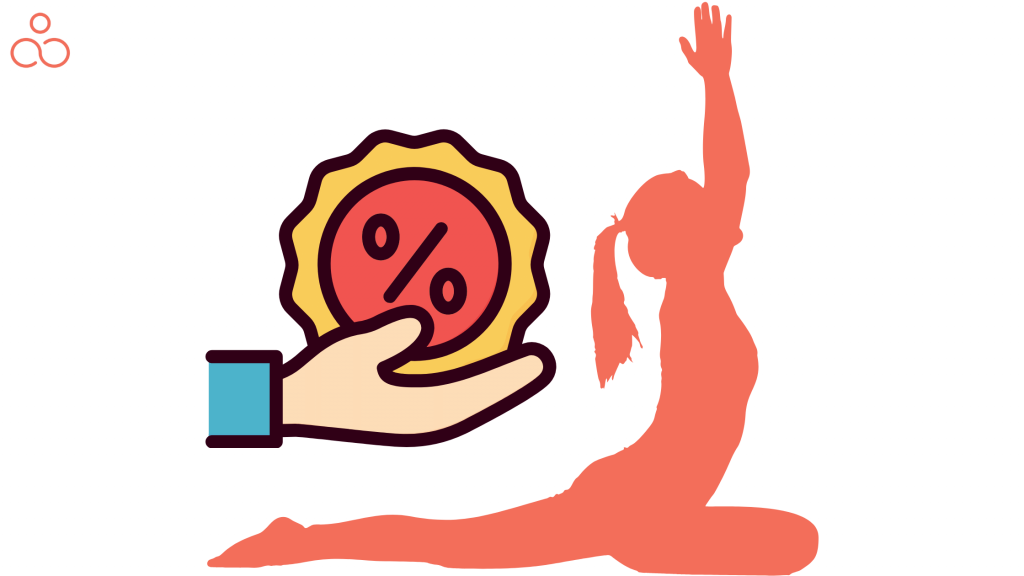
Consider going beyond single sessions when coming up with pricing packages for your Yoga business. You could create memberships, multiple-class offers, or special promotions. Get feedback from your customers and think from their point of view. For instance, you could offer a single private session for $70 or a package of six private classes for $400. This not only saves the students money but also increases your revenue. You could also try a 10% discount for nine categories, with one class for free. Just remember to find a balance between what’s beneficial for both you and the clients. Here’s an example of a Yoga studio price list: A single private session is priced at $70, and a package of six private classes is $400, which saves the students $20, and you get to count the cash. Another great box you could use is giving one free class for every nine categories, which is a 10% discount. Feel free to adjust the number of styles to suit your needs.
Why are promotions necessary?
Your goal may be to improve people’s lives through Yoga, but if you want to take your Yoga business to the next level, you need to make sure more people know about it. Offer regular deals and special promotions to keep things exciting and up-to-date. Showcase your offers on your website to give it a modern feel. You can stay connected with your customers (and potential customers) by running a blog, vlog or newsletter. Additionally, hand out flyers or ads in local newspapers to reach new people and give your existing clients even better deals.
Mistakes you must avoid
- Setting prices only to be cheaper than your competition is rarely a great strategy. You should always keep your clients in mind and guarantee they get good value for their money.
- Additionally, you want to avoid attracting bargain hunters. As a business owner, you should target serious students, not those only looking for the cheapest service. This doesn’t mean that you can’t charge less than your rivals, only that you shouldn’t do it just to be seen as the “better bargain”. It would help if you displayed your value and qualifications as a seller.
- It’s essential to keep your studio’s pricing list straightforward. If it’s simple enough, it could scare off potential clients.
- Stick to the basics – single group sessions, drop-in classes, memberships, multiple class packages – and set prices by type of Yoga class. Include beginner, mid-level, and advanced classes, too. Plus, given the pandemic, you could consider offering online courses to allow clients to take lessons from home. And if you want to make this even more straightforward, try using Yoga scheduling software. It’ll make setting up pricing much easier for clients and staff alike.
- Need help with how to set your prices? Don’t worry – many factors determine your profit margin, including material costs, the value of your class, and market demand. Take prenatal Yoga classes, for example. These require bolsters and pillows, so the cost will be higher than for a general Yoga class. Make sure you keep this in mind when setting your prices!
- The market never stops moving, meaning you must watch for new trends, client needs and competition. If your clients keep saying your services are a steal, it’s time to slowly increase your rates. You don’t want to undersell yourself, after all.
- Plus, if you’re updating your business and your trainers are getting more qualifications, adjusting your prices to reflect the extra value you’re providing makes sense. It’s essential to update your pricing policy when the market changes so you stay caught up.
FAQs
How to start your own Yoga studio?
First, you’ll need to get certified by an accredited authority – this is your ticket to success. Then, it’s time to create a business plan that defines your goals and objectives. Think about how much capital you’ll need to get started – enough to cover the costs of running your studio and supporting yourself during the early stages of your business. Also, do some research to find out the current rates for Yoga classes in your area – you’ll want to ensure you stay competitive. In urban areas, there can be a lot of free and donation-only courses, so keep that in mind when setting your fees.
How to become a famous Yoga instructor?
Take a moment to ask yourself why you aspire to become a Yoga teacher. Is it to offer something meaningful to people’s lives or to be popular on social media? To prevent the further decline of postural Yoga, do what works best in your experience to help others, even if it means deviating from the most popular way. Teach because you love the practice and have a passion for sharing it with others and not to be idolized on a stage.
How to earn more money through Yoga?
Looking to build relationships with your audience while making money? Starting a podcast could be a perfect choice! Yoga podcasts are a great way to get people interested in the practice. Please talk about your Yoga style, its benefits, and how mindfulness can come into play. You can even provide helpful tips and tricks for your listeners to take part in. Not only that, but you can also offer classes like meditation and breathing exercises! A voiceover is just as helpful as an in-person class for those already familiar with Yoga.
How to make your Yoga class unique?
It’s effortless to slip into the snare of attempting to be somebody else while teaching Yoga. You may think you need to be serious and sombre to be a successful teacher, but if that’s not your style, then don’t push it. You don’t have to look or act a certain way or even change your name to something Indian-sounding to be a great Yoga teacher. Just be yourself, and your students will feel and appreciate your unique energy. It’s okay if not everyone likes it – at least you’ll be true to yourself. So don’t feel like you have to put on a facade when teaching – it’ll be more authentic for your students and more excellent for you.
What is the easiest way to promote your Yoga class?
Want to get more eyes on your Yoga classes? Social media is your friend! You can post videos to share with prospective students, which is a great way to give ’em a taste of your style. Try posting 3-7 times a week, with one of those being a 30-minute live class. Don’t stress about competing with other teachers who have social media fame – focus on your target audience and offer these free classes as a way for them to get to know you.
Conclusion
Becoming a Yoga teacher may seem like a breeze, but the difficulty kicks in when you’re expected to educate students. Yoga can be a powerful tool when utilized with passion. Furthermore, Yoga instructors should possess certain qualities to help them engage their pupils. To conclude, Yoga is a fantastic way to connect with your soul, and an instructor should be mindful of maximizing the student’s attention.

